Key takeaways:
- Cloud-based genealogy tools enhance accessibility and collaboration, enabling users to explore their ancestry from anywhere.
- Popular platforms like Ancestry.com, MyHeritage, and FamilySearch provide unique features and vast databases, enriching the genealogy experience.
- Effective research involves organizing information, leveraging community support, and embracing unexpected discoveries.
- The future of genealogy includes advancements in AI and collaboration, promising more dynamic and interconnected research possibilities.
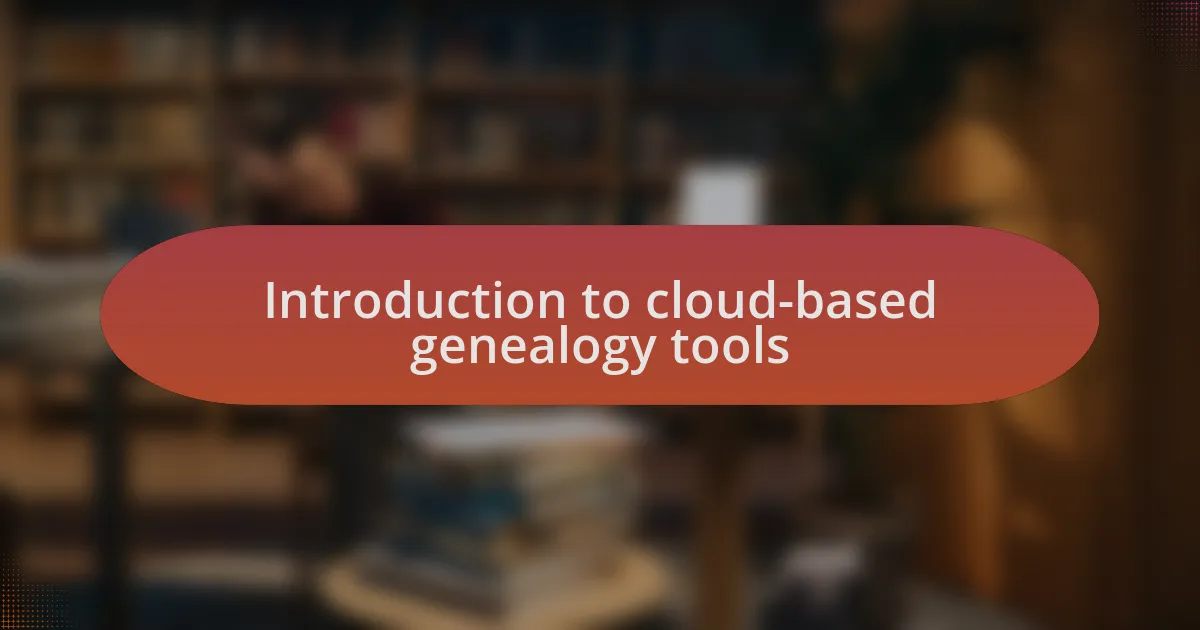
Introduction to cloud-based genealogy tools
Cloud-based genealogy tools have transformed the way we trace our ancestry. I remember a moment when I unearthed a family secret online, all thanks to a cloud-based platform. It made me wonder, how many hidden stories are waiting for us to discover in our family trees?
These tools allow users to access vast databases of records from anywhere in the world, making genealogy more accessible than ever. I often think about how my grandfather would have marveled at this technology; he spent hours poring over dusty archives in local libraries. Wouldn’t it have been incredible for him to have this wealth of information at his fingertips?
Moreover, the collaborative features of these platforms invite interaction with other users, fostering a sense of community. I’ve connected with distant relatives and shared stories that our families had long forgotten. Doesn’t that speak to the heart of genealogy, connecting us not just to the past but also to each other?
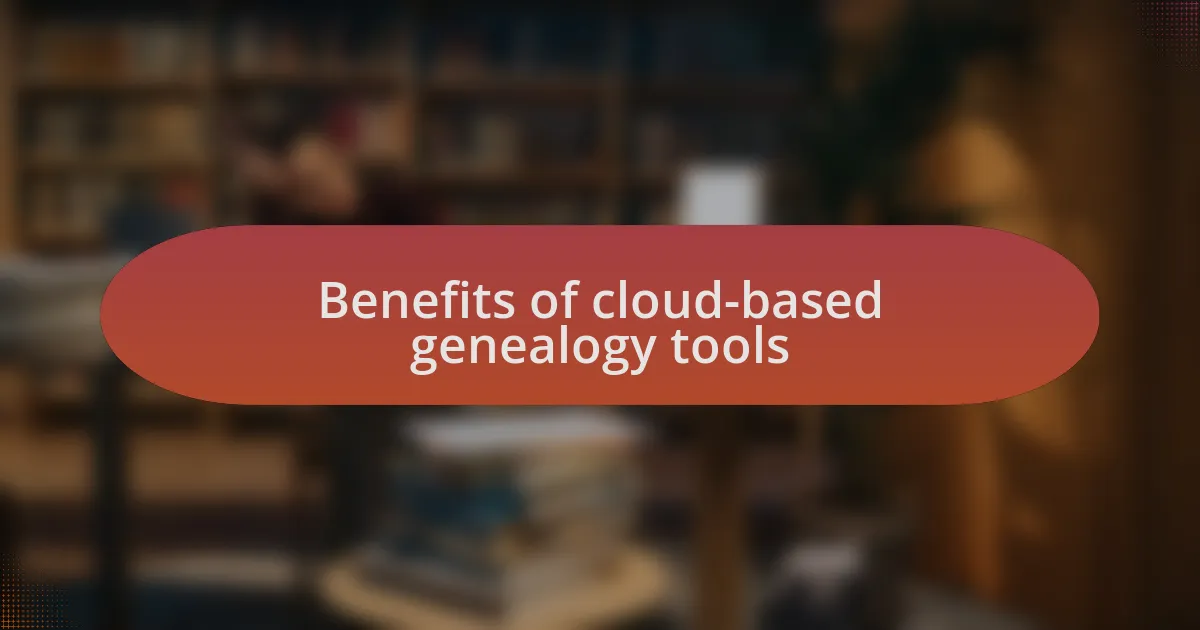
Benefits of cloud-based genealogy tools
One of the most significant benefits of cloud-based genealogy tools is the ease of accessibility they offer. I recall sitting on my couch late one night, fascinated as I scrolled through historical records that were just a few clicks away. It truly amazed me how people from different parts of the world can research their ancestry without having to travel across the country to visit archives. Isn’t it thrilling to think that our family histories are just waiting for us to uncover them from the comfort of our homes?
Another advantage lies in the automatic updates and preservation of data. I remember losing track of important information in physical notebooks, where insights would get buried under countless pages. With cloud-based systems, I can feel secure knowing my family tree is continually updated and backed up. How reassuring is it to know that memories don’t fade because they’re stored safely in the digital realm?
Lastly, these tools empower us to collaborate easily, enhancing our research efforts. When I connected with a fellow genealogist through a cloud platform, we uncovered shared ancestry that we never would have traced alone. Have you ever found a missing piece of your family puzzle through someone else’s research? It’s moments like these that remind me that genealogy isn’t just about records; it’s about people sharing rich histories and connecting across time.

Popular cloud-based genealogy tools
When considering popular cloud-based genealogy tools, Ancestry.com often comes to mind first. I vividly remember my initial dive into Ancestry’s vast database; it felt like standing in front of an endless library filled with hidden treasures of my family history. The user-friendly interface made it easy to create my family tree and discover vital documents, sparking an unparalleled excitement to learn more about my roots.
Another noteworthy tool is MyHeritage, which I found particularly appealing for its innovative features like colorization of old photographs. I still recall the rush of emotions I experienced when I rendered one of my grandmother’s sepia-toned images into vibrant color, allowing me to see her as she once was. It’s remarkable how such features can breathe new life into history, inviting us to connect more deeply with our ancestors’ stories.
FamilySearch also deserves a mention, given its impressive free access to a world of records. As I explored its archives, I felt a sense of camaraderie with other users who were equally dedicated to their genealogical journeys. Have you ever felt that shared kinship while sifting through old records? It’s a profound reminder that while we may be diving into personal histories, we’re part of a broader community of family seekers, united by our quest to understand where we come from.

Key features to look for
When evaluating cloud-based genealogy tools, look for a robust search capability. I remember the first time I used a tool with an extensive search feature; it felt like having a personal historian at my fingertips, capable of digging through various records in a flash. Are you the type who can get lost in the quest for that elusive ancestor? A powerful search engine can significantly streamline the process, making your research much more enjoyable and efficient.
Collaboration features are another key aspect to consider. I’ve had moments where I collaborated with distant relatives on a shared family tree, and it was thrilling to see new branches sprout from our united efforts. Has someone ever surprised you with a photo or a story that added depth to your understanding of your family? A tool that encourages sharing and discussion can dramatically enhance your experience and bring the family narrative to life.
Additionally, the ability to access historical records and documents is paramount. I clearly recall the day I stumbled upon my great-grandfather’s military draft card through one of these tools; it transformed my perspective on his life and sacrifices. Without access to such invaluable resources, much of our family’s story would remain shrouded in mystery. Don’t you want to uncover every detail about your ancestors? A platform that offers a wealth of records can be the difference between a surface-level exploration and a deep, fulfilling journey into your heritage.
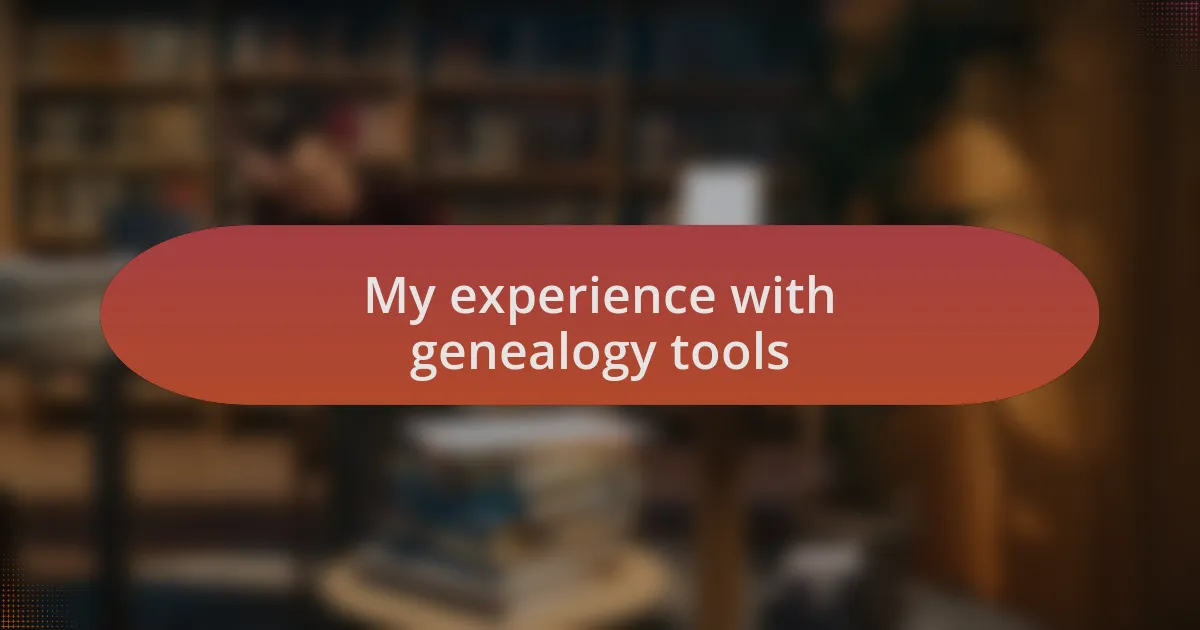
My experience with genealogy tools
Reflecting on my journey with genealogy tools, I can’t help but think of a pivotal moment when I discovered my grandmother’s immigration records. This wasn’t just a piece of data; it was a window into her struggles and dreams. Have you ever found something that made you feel a deep connection to your ancestry? That feeling enriched my understanding of her life journey in ways I never expected.
I also remember attempting to trace my family’s roots back to a small village in Europe. It was a daunting task until I stumbled upon a cloud-based genealogy tool that visualized family trees beautifully. Watching those connections unfurl like branches on a tree brought my history to life. Isn’t it amazing how technology can transform overwhelming research into an engaging narrative?
Moreover, I often think about the times I had conversations with close friends about our family histories. Sharing findings using these tools has led to some captivating discussions, igniting a spark of curiosity among us. Have you experienced such moments? Collaborating with others has not only expanded my knowledge but has also created a sense of community among us, proving that genealogy is as much about connection as it is about discovery.
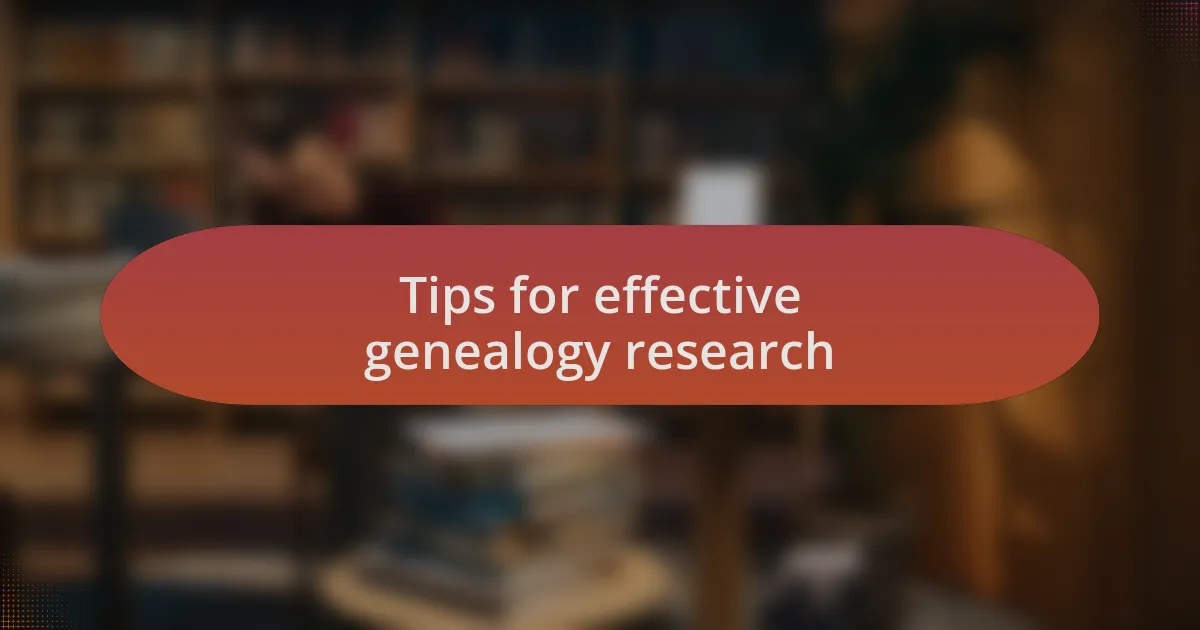
Tips for effective genealogy research
When diving into genealogy research, I found that organizing my findings was crucial. Creating a dedicated notebook or digital folder helped me track names, dates, and locations effectively. Have you ever felt overwhelmed by the sheer volume of information? Keeping everything organized not only made my search easier but also allowed me to connect the dots more intuitively.
Another effective strategy is to leverage online forums and communities. I remember joining a genealogy group where members shared tips, resources, and even personal experiences. The support and wealth of knowledge I gained from those conversations turned my solitary quest into a collaborative adventure. Have you thought about seeking help from others? It’s incredible how connecting with fellow enthusiasts can breathe new life into your research.
Lastly, don’t shy away from thinking outside the box. I once stumbled upon an old family recipe that led me to a distant relative who documented our family history. It was a chance find that opened up a treasure trove of stories and connections. How often do we overlook seemingly trivial details in our search? Embracing the unexpected can lead you down paths you never imagined.
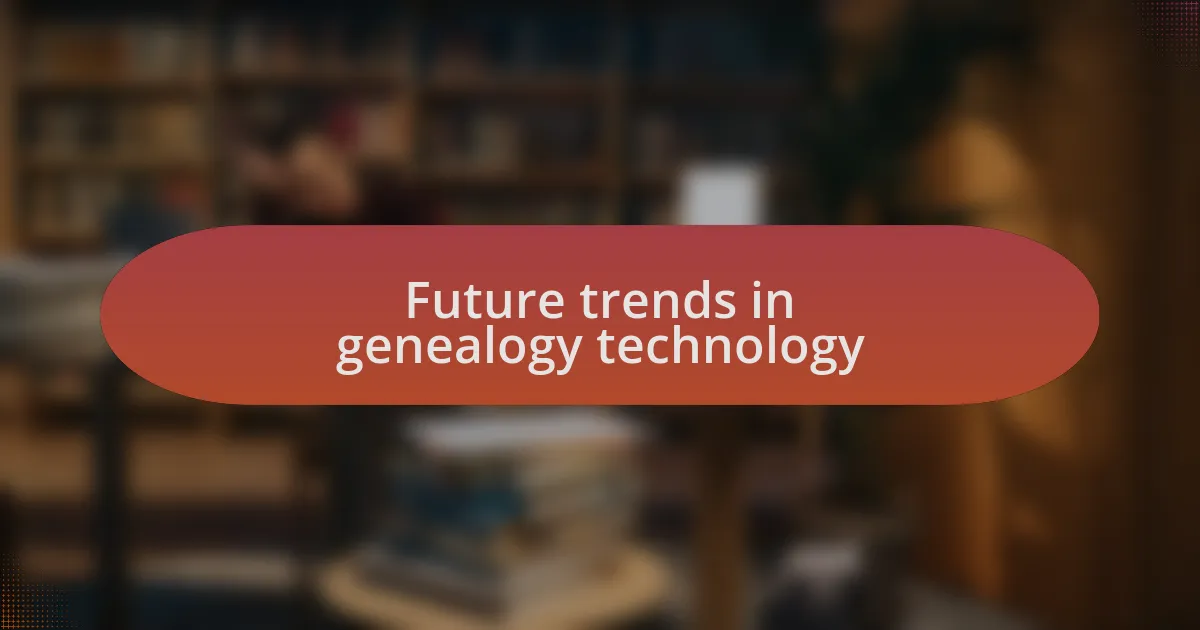
Future trends in genealogy technology
As technology continues to evolve, I see cloud-based genealogy tools playing a pivotal role in shaping the future of our research. Imagine being able to compile family trees that not only grow dynamically with new discoveries but also link seamlessly with historical records at the click of a button. Isn’t it exciting to think that one day, you might receive real-time updates about relatives you never knew existed?
I’ve noticed that the integration of artificial intelligence in genealogy tools is gaining traction. Personally, when I first experimented with AI-powered ancestry suggestions, it felt like having a seasoned expert guiding me through the maze of my family’s past. Can you envision how AI might aid in deciphering ancient documents or even connecting you with relatives you’d otherwise overlook? The potential for discovering hidden branches of our family trees is remarkable.
Moreover, the trend of collaborative platforms is growing stronger, allowing researchers to work together across vast geographical distances. I remember collaborating on a project with someone across the globe, and it was fascinating to piece together our shared history through shared documents and resources. Have you considered how collaboration might enhance your own research experience? It’s thrilling to think that the future of genealogy might be defined by a global community united by a common passion for uncovering our shared heritage.